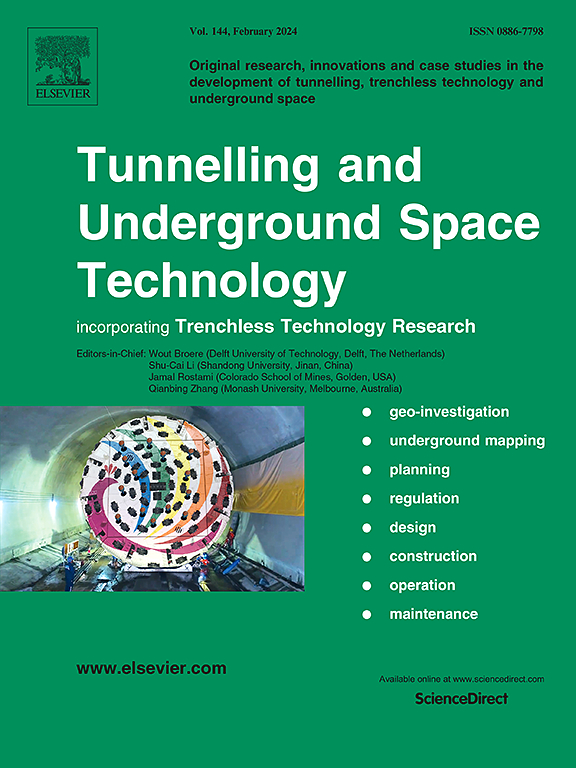Decision tree analysis of cutter selection for tunnel boring machines: A study of geological conditions and machine types in high-performing TBM projects
IF 6.7
1区 工程技术
Q1 CONSTRUCTION & BUILDING TECHNOLOGY
引用次数: 0
Abstract
The selection of appropriate cutter types and configurations is crucial for effective Tunnel Boring Machine (TBM) operations. This study introduces a novel decision tree methodology to develop a model for selecting primary cutter types (PCT) and cutter configurations based on actual data from 112 high-performing TBM projects. Key parameters, including geological conditions (Soft Soil, Hard Soil, Coarse Soil, Bouldery Ground, Soft Mixed, Hard Mixed), machine type, diameter, and cutter type, were analyzed. Various decision tree algorithms, including C4.5, CART, SVM, Random Forest, and ensemble methods such as Bagging, AdaBoost, XGBoost, and LightGBM, were applied and evaluated using performance metrics (accuracy, precision, recall, F1-score, and ROC-AUC). Results indicate that CART and KNN algorithms are the best performers, with accuracies of 89.3 % and 88.4 %, respectively, while AdaBoost was the least effective. Decision rules from the CART model reveal geological conditions as the most significant predictor of PCT, followed by machine type and diameter. This study provides a systematic framework for cutter configuration selection in mechanized tunneling, offering practical guidelines for the industry.
隧道掘进机刀具选择决策树分析:高性能隧道掘进机工程地质条件与机种研究
选择合适的刀具类型和配置对于隧道掘进机(TBM)的有效作业至关重要。该研究引入了一种新的决策树方法,根据112个高性能TBM项目的实际数据,开发了一个选择主刀具类型(PCT)和刀具配置的模型。分析了关键参数,包括地质条件(软土、硬土、粗土、砾质土、软混合土、硬混合土)、机器类型、直径和刀具类型。应用各种决策树算法,包括C4.5、CART、SVM、Random Forest和Bagging、AdaBoost、XGBoost和LightGBM等集成方法,并使用性能指标(准确性、精密度、召回率、f1分数和ROC-AUC)进行评估。结果表明,CART和KNN算法的准确率最高,分别为89.3%和88.4%,而AdaBoost算法的准确率最低。CART模型的决策规则表明,地质条件是PCT最重要的预测因子,其次是机器类型和直径。本研究为机械化隧道掘进中刀具配置的选择提供了一个系统的框架,为行业提供了实用的指导。
本文章由计算机程序翻译,如有差异,请以英文原文为准。
求助全文
约1分钟内获得全文
求助全文
来源期刊

Tunnelling and Underground Space Technology
工程技术-工程:土木
CiteScore
11.90
自引率
18.80%
发文量
454
审稿时长
10.8 months
期刊介绍:
Tunnelling and Underground Space Technology is an international journal which publishes authoritative articles encompassing the development of innovative uses of underground space and the results of high quality research into improved, more cost-effective techniques for the planning, geo-investigation, design, construction, operation and maintenance of underground and earth-sheltered structures. The journal provides an effective vehicle for the improved worldwide exchange of information on developments in underground technology - and the experience gained from its use - and is strongly committed to publishing papers on the interdisciplinary aspects of creating, planning, and regulating underground space.
 求助内容:
求助内容: 应助结果提醒方式:
应助结果提醒方式:


